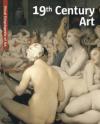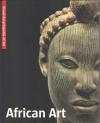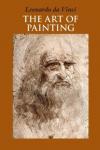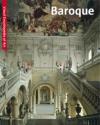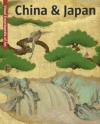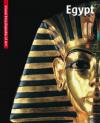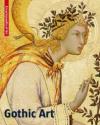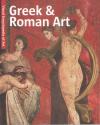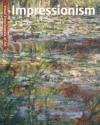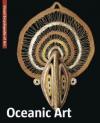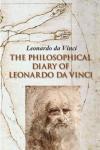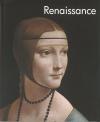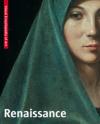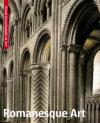Art
The Visual Encyclopedia of Art
Styles examined include Neoclassicism, Empire, Sturm und Drang, Romanticism, the Nazarenes, Biedermeier, the Pre-Raphaelites, Primitivism, the Gothic Revival, and Realism. Artists include William Blake, John Constable, Gustave Courbet, Jacques-Louis David, Delacroix, Goya, Ingres, and Turner. | The Visual Encyclopedia of Art
The art of sub-Saharan African has a long history, although it is difficult to reconstruct precisely because many works, being made from wood and earth, have disappeared without trace, and archaeological excavations, which could enrich our knowledge of the region, are still rare. Nonetheless, what has been preserved—largely works from the past 150 years, although there are some which date back even thousands of years—is already substantial... | This book presents a comprehensive outline of Sub-Saharan African art dating through the last 150 years, and connects a multitude of styles to specific ethnic groups and to spatial-temporal macro-areas that date back thousands of years. To fully understand the meaning of each Sub-Saharan artifact, we must try to imagine it back in the hands of the person who made it, and contextualize it through the humus of the beliefs and superstitions that played a part in its creation. A recurring theme... |
A Philosophical Library Book Generations of aspiring artists have turned to Leonardo's Art of Painting, to study his mastery of anatomy and aerial perspective, his perfect blending of realistic detail with psychological penetration, and above all, his scientific approach to the art medium. | The Visual Encyclopedia of Art
The definition of the Baroque age, meaning the set of complex cultural and artistic expressions that developed in Europe during the 17th century, is still subject to debate among critics and historians. In one of its most commonly accepted meanings, Baroque describes some aspects of 17th-century art, with sumptuous Roma at the center, that upset the proportions and static harmony of the Renaissance—already undermined by Mannerism during the previous century—through the use of curves... | The Visual Encyclopedia of Art
The extreme eastern part of the Asian continent represents a relatively homogenous region in art history, rich in unique aspects. Due to its antiquity and the exceptional nature of its art, the immense country of China influenced the area decisively, marking the regions subject to its cultural effects and often its political dominance. In the same way, Japan and Korea assimilated these influences, modifying them partially with their own traditions. |
Art and Photography
This lavish volume, drawn primarily from the collections of The Metropolitan Museum of Art and The Musee du quai, Branly, Paris, displays the art, artifacts and people of Oceania, the Americas, Africa, and Asia from 1850-1910. “The images presented here bear witness to the great diversity of cultures, yet they also reflect the existence of similar needs, practices and activities in all societies. The custom of wearing masks, found at every latitude, for example... | The Visual Encyclopedia of Art
No civilization has left such imposing and fascinating vestiges as that of Egypt, and yet so little trace of the “human.” In ancient Egypt art was not an expression of the human world but a living and active representation of the act of creation. The extreme and forceful nature of the Nile Valley—where the fertile plain runs without a break into the desert, and the annual flooding erases the landscape in a relentless cycle as it brings new life—has shaped Egyptian art. It is in the first place a direct emanation of the divine, and as such proposes the order established by the gods with mathematical rigor... | The Visual Encyclopedia of Art
The beginnings of Gothic art can be dated toward the middle of the 12th century. Starting from the Ile de France, this artistic movement spread throughout Europe with varying speed and intensity, embracing all fields of artistic endeavor and lasting in some regions until the 16th century. The most obvious architectural developments involved the introduction of the ogival arch, flying buttresses, spires, and galleries that permitted the lightening of walls and the construction of taller buildings. Statuary began to become distinct from architectural decoration... |
The Visual Encyclopedia of Art
Starting in the 10th century BCE, Greek art began to stand out for its variety of regional styles found mainly in ceramic works of the Protogeometric and Geometric Periods, which were given these names due to the use of decorative patterns based on a combination of lines and circles. These characteristics were orientalized following the acquisition of motifs from eastern civilizations during the 8th and 7th centuries BCE... | The Visual Encyclopedia of Art
Amid the innovative developments of the second half of the 19th century, a new trend in painting came to the fore in France. From 1874 onward, it was called Impressionism. Claude Monet, Edgar Degas, Auguste Renoir, Edouard Manet, Camille Pissarro, Alfred Sisley, Mary Cassatt, and Berthe Morisot were the leading lights of this movement that would spread throughout Europe and the United States. Their aim: to give art a modern dimension, free from the contents and the conventions dictated by academic tradition... | The Visual Encyclopedia of Art
An encounter with the artistic heritage of Islam is characterized by two factors that make it very special: the vast dimension of the areas involved, from Spain to Central Asia as far as China, to sub-Saharan Africa, and duration through fourteen centuries of history. Is it possible to treat such a complex and multifaceted phenomenon as a single subject? The images that follow are an answer. Within the great variety of architectural forms and materials, some constants stand out: the mosque... |
During the early Renaissance, which had its source in Italy and its hub in Florence, culture and the arts underwent a radical renewal that gradually spread through the rest of Europe, to varying degrees and in different stylistic forms. Underpinning the Renaissance was a new fascination with the ancient world—its philosophy and literature, its mythology and art—together with the ideas of Neo-Platonic philosophy and humanist culture. Interest in science broadened... | The Visual Encyclopedia of Art
The immense expanse that opens up between Asia and the coast of America represents an ancient and fascinating world. On the routes traced by the winds and currents, populations and cultures appeared, integrated and split up over the course of the centuries, adapting themselves to a powerful nature that generated unique religious practices whose artistic manifestations are well known. The history of Australia, Melanesia, Micronesia, Easter Island, and Polynesia originated with ancient migrations from the continent of Asia. The most distant in time, which took place about 40,000 years ago... | A Philosophical Library Book Translated and Introduced by Wade Baskins This anthology of thoughts, opinions and observations by one of the most original thinkers of the Italian Renaissance is a fine introduction to the work of Leonardo da Vinci. |
The Pocket Visual Encyclopedia of Art
This "pocket" edition contains all the best parts of the visual encyclopedia of the Renaissance - but is more portable. | The Visual Encyclopedia of Art
The Renaissance, a vast cultural and ideological movement, was the period of intense literary, artistic and scientific creativity that involved Europe between the 14th and 16th centuries and marked the transformation from the medieval to a modern concept of the intellect. During the early Renaissance, focused and nurtured in Florence and in Italy, the arts and culture underwent a radical renewal that spread gradually across Europe by various means and stylistic expressions... | The Visual Encyclopedia of Art
The term Romanesque, however imprecise, is a useful key to our understanding of a period of profound innovation. Just as the romance languages shared a common root and became differentiated as they spread across Europe, the artistic language of the “Romanesque” diversified as it was interpreted in the various regions of Europe from the 11th century. This makes it possible to speak of a “European” art, even at a time of extreme geopolitical fragmentation. Common cultural references... |

